Cesky Krumlov Castle's exquisite theatre: The scene of princely diversion
The object of a heroic recent restoration, the 1760s theatre at Cesky Krumlov carries the modern visitor back into the Baroque world. In the second of two articles on the castle, John Goodall examines its astonishing survival.


With its dramatic setting, deep history, splendid architecture and rich collections, Cesky Krumlov not only fulfils the highest expectations of a great central European castle, in one respect at least, it transcends them.
As we saw last week, the castle today bears the stamp of the massive mid-18th-century reorganisation undertaken by Prince Joseph Adam of Schwarzenberg after he came of age in 1741. One of his additions, however, stands apart as a survival of exceptional significance: the Baroque theatre that he created is perhaps the most complete in Europe.
There is a well-documented tradition of theatre in the town dating back to the 16th century and, from 1675, a permanent company of players existed in the castle. Its then owner, Prince Eggenberg, possessed property in Italy and was an enthusiastic visitor to the theatres of Venice. The repertoire of his company presumably included some of the 600 volumes of plays by the Antique, German, Italian, French and Spanish authors that were collected in the library.
Operas were also performed in the castle and, from 1679, there was a resident castrato, Maisl, who had leave to perform in the wider region and to train in Venice. Some of the surviving scores are marked with the names of dancers, indicating that ballet was also performed here.
This activity was accommodated in the main rooms of the castle until 1680–2, when a freestanding theatre was erected on the site of the present building. It was constructed under the direction of two Italians, Giacommo Antonio de Maggi and Giovanni Maria Spinetti. The framing of the timber interior and stage machinery was undertaken by Laurentius Khüenmihler and the sets were created by Johann Martin Schaumberger, a painter from Salzburg.
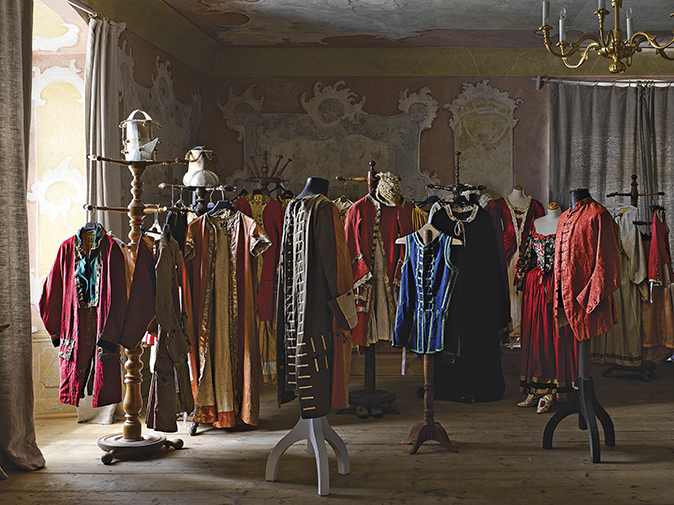
It is not clear what happened to this theatre or its contents, but, from the 1730s, the castle interiors were once again being pressed into service for stage performances. Then, as part of the gradual reorganisation of the castle undertaken by Prince Joseph Adam of Schwarzenberg, the theatre was rebuilt in 1765–6. One timber of the building actually bears the later date roughly inscribed into it. Coincidentally, this is the same year that the theatre at Drottningholm in Sweden, the other great surviving Baroque theatre in Europe, first opened.
It is likely that the Prince used Andrea Altomonte (1699–1780) to design the building. Altomonte was involved in his architectural projects both at Cesky Krumlov and Vienna and, from 1763, had been involved in the imperial Court theatre. Certainly, the Prince otherwise used expertise from the capital: the carpentry and stage machinery were created by a Viennese specialist, Laurentius Makh, and the curtain and set designs were executed by Johann Wetschel and Leo Markel. In this respect, it offers a fascinating insight into Vienna’s much larger lost theatres of the period.
Exquisite houses, the beauty of Nature, and how to get the most from your life, straight to your inbox.
The building, which forms part of the fifth castle courtyard, is relatively plain from the exterior, with a stuccoed façade and high-pitched roof. It is tempting to regard the theatre as an isolated building, but it must be emphasised that it formed part of an apartment for entertaining with the Masquerade Hall (1748) and the contemporary Hall of Mirrors – the latter also painted by Wetschel and Markel – that were linked across the moat by the great Cloak Bridge. It is one mark of how interconnected these spaces were that public latrines were provided on the gallery of the bridge between them, their doors marked ‘men’ and ‘women’ in Gothic script.
The castle archive is full of music collected for the theatre and includes work by French, German and Italian composers. We know that the Prince found mainstream opera seria – with its ‘serious’ Classical and mythological plots—dull. His preference was for the lighter fare of opera buffa. Perhaps the first piece specifically commissioned for it was an opera in this jocose vein by the Vienna-based composer Giuseppe Scarlatti: Dove è amore è gelosia (Where there is Love, there is Jealousy). It was performed on July 24, 1768, to celebrate the marriage of the Prince’s son. The scores survive and the performance was re-created in the restored theatre in 2011.

In the 19th century, the theatre fell out of intense use. From 1814, it was leased both to travelling companies and to amateur groups, who collectively staged about three performances a year there. It was closed down in 1897 and, during the 20th century, was only occasionally used for public performances until 1966. Thereafter, it closed entirely and began to deteriorate.
By the mid 1980s, and despite very clumsy attempts at restoration, it was effectively derelict. Only in the late 1990s did its fortunes finally reverse under the care of the present castle curator, Katerina Cichrova. The ensuing restoration work has created the interiors the modern visitor sees.
The middle gallery of the castle bridge leads to the Prince’s Box of the theatre. It faces the stage and forms the centrepiece of a curving gallery that encircles the intimate auditorium on three sides. Curiously, this box must have been a thorough-fare for everyone entering the theatre from the castle, an arrangement that perhaps suggests some softening of social protocols during performances. There are external doors to the theatre, but presumably these served the audience gathered in the pit.
Immediately below the stage is an enclosure for the orchestra, with a long, two-sided music stand. Players faced each other across this rather than looking towards a conductor. The body of the pit is filled with closely packed benches for those of the lowest social status in the audience (although it is not entirely clear whether they were servants or courtiers). Rather than a raking floor, the benches themselves have progressively longer legs and foot rests.
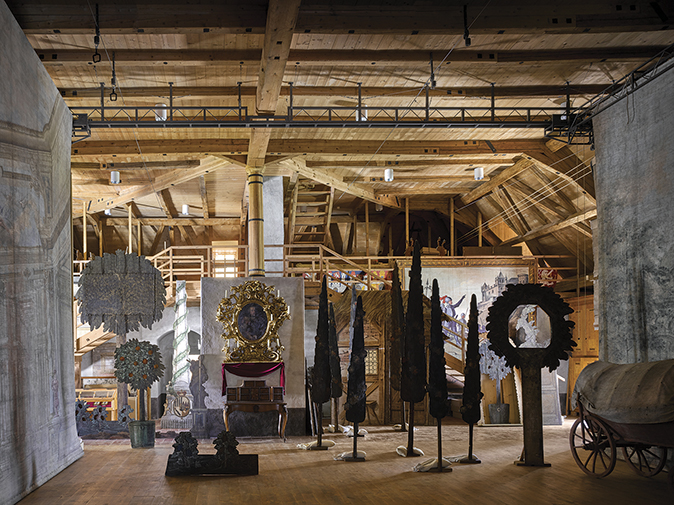
Backstage, the theatre not only preserves a series of 12 complete stage sets, but the working mechanisms that supported them. Each set comprised a backdrop, a series of eight (and, in one case, 10) wings and a corresponding number of overhanging canvases to represent the sky or ceiling of the represented scene. They include a church and palace interior, a military encampment and a formal garden. Some have interchangeable elements that allow for the creation of hybrid sets, making a total of 14 possible scenes.
Three sets could be mounted together on the stage mechanism at any one time, allowing for a very fast interchange of scenes. Each constituent wing is of painted canvas pinned to a wooden frame and this is mounted at the top and bottom on a rail. Using a latticework of ropes and a rotating drum beneath the stage, all operated by a spindle wheel, one set of wings could be withdrawn and their replacements rolled forwards in a single movement.
At the same time, the backdrop could be unfurled and upper canvases dropped down from mechanisms above the stage. The lattices of ropes make the ceiling space feel like the lair of some gargantuan spider.
The theatre has no direct, natural light. Artificial lighting was mounted behind the wings on metal stands (some with polished backplates to reflect the light) fixed into each wooden frame. There were both candles and small glass bowls – shaped like goblets, but without bases – each with a wick set in a mixture of wax and sand. This mixture helped the candle burn reliably – that is to say, evenly – and with a low, long-lasting flame. Amazingly, large numbers of these candles have survived in the theatre store.
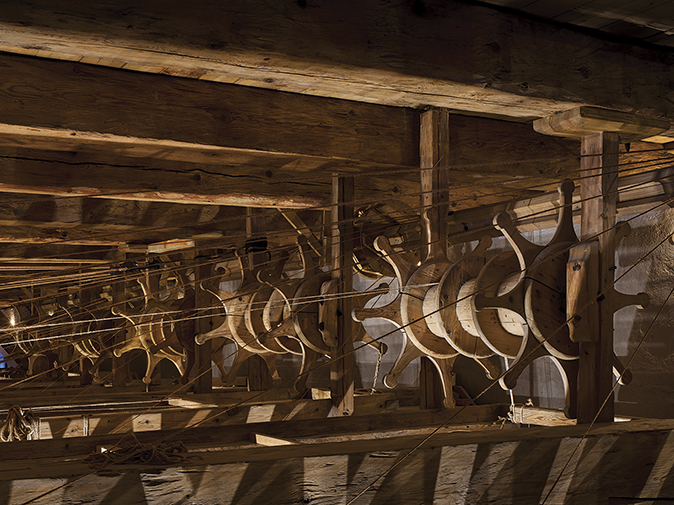
There were also footlights set in a wooden trough across the full width of the stage that could be raised or lowered by turning a spindle wheel to increase or diminish the light.
Also beneath the stage is a small box for a prompter as well as a trapdoor with a rising floor operated by weights, so figures or props could be lifted up onto the stage. The stage machines to simulate wind, thunder and rain all survive, as do countless scenic props manufactured from a combination of timber and canvas. There are trees, bushes, vines, swards of grass and garden ornaments such as obelisks all with narrow stands that can be secured – as contemporary theatrical treatises direct – with bags of sand.
There are also mechanical objects, such as a fountain with a winding scroll of canvas to suggest pouring water, a sea with tiers of moving waves and a miniature galley that can row its way across the stage. More simply, there is a wooden statue that can fracture as if struck by divine wrath plus a sea monster.
Many of these props incorporated translucent patches of canvas that could be backlit and thereby made more legible, so each bunch of grapes, orange or lemon was illuminated by its own stage light. It is not difficult to understand why so many theatres were destroyed by fire.
Some of these props remain in use for theatre productions, but others have been precisely reproduced to save damage to the originals. It must have required an army of stage hands to manhandle objects onto the stage and to light and extinguish the candles they incorporated. Presumably the household at large could have been pressed into service.

All these survivals alone would make this theatre the most perfectly preserved structure of its kind in Europe. Incredibly, however, there is much more. Stored in the wardrobe of the theatre is a large collection of historic clothing, including shoes and hats, suitable both for theatrical productions and masquerading. Incredibly, several items from it are depicted in the Masquerade Hall of 1748, including the waistcoat worn by Joseph Lederer, the coffee-drinking artist himself.
The 18th-century core of this extraordinary wardrobe was adapted and augmented throughout the 19th and 20th centuries. When the theatre was abandoned by the authorities in the 1980s, the wardrobe was removed from the castle altogether and stored in boxes in a synagogue in the town. Since the restoration of the theatre, the whole collection has been catalogued and conserved.
Among the costumes are both cheaply made and very expensive items. In some of the latter cases, it seems possible that the particular costumes were made for the Prince and his family; in others, it could be that unfashionable items of fine dress were abandoned for theatrical use.
As well as costumes there are also several liveries for the musicians of the orchestra. These have been adapted over time to fit men of very different stature, evidence that the wardrobe remained in use over a long period.
As well as the costumes, there are stage props, including weapons, armour and other odd objects. These vary in scale from a garden bench or a small cart stall painted with trinkets and packets of coffee to Cupid’s bow and quiver, made from gilded papier-mâché.
At the heart of the theatre’s fascination – and the associated Masquerade Hall – is just how much survives here. Although the world of 18th-century aristocratic pleasure is forever lost to us, there is perhaps nowhere that we can come closer to understanding the experience of what it must have been like.
Acknowledgements: The Friends of Czech Heritage, Katerina Cichrova and Tereza Bauerova

Cesky Krumlov: Inside one of Europe’s greatest castles
Cesky Krumlov Castle was extravagantly remodelled in the 18th-century. In the first of two articles, John Goodall considers its development
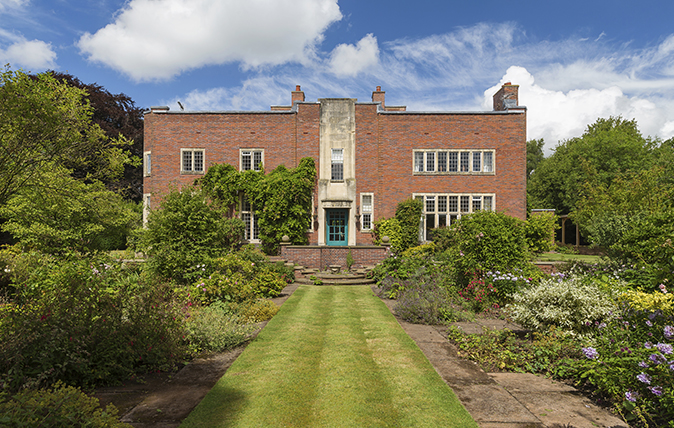
Credit: Justin Paget
Upmeads: A Modernist castle as odd and beguiling today as ever
Boldly conceived by a leading shoe manufacturer and his wife in 1908, this house, recently restored, elicited much comment, as
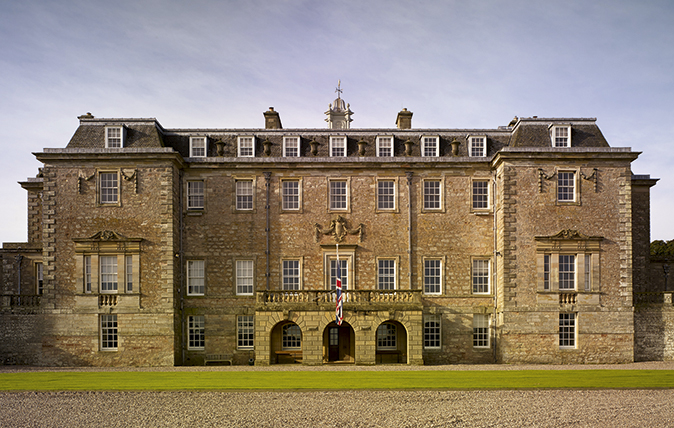
Marchmont: The Scottish expertise and craftsmanship behind the revival
In the second of two articles, Roger White explains how Scottish expertise and craftsmanship lie behind the remarkable and stylish

John spent his childhood in Kenya, Germany, India and Yorkshire before joining Country Life in 2007, via the University of Durham. Known for his irrepressible love of castles and the Frozen soundtrack, and a laugh that lights up the lives of those around him, John also moonlights as a walking encyclopedia and is the author of several books.
-
 What on earth is the person who comes up with Annabel's otherworldly facade displays on? London's most magical Christmas shop displays
What on earth is the person who comes up with Annabel's otherworldly facade displays on? London's most magical Christmas shop displaysPhotographs by Greg Funnell.
-
 What trees taught me about perfect planting — Alan Titchmarsh
What trees taught me about perfect planting — Alan TitchmarshSense and patience is key to growing healthy trees, as a certain Mr Mackenzie showed a young Alan Titchmarsh
-
 Sweet civilisation: What do you get when you ask architects to compete in a gingerbread competition?
Sweet civilisation: What do you get when you ask architects to compete in a gingerbread competition?The Gingerbread City is back in London’s Kings Cross. Lotte Brundle pays it a visit.
-
 This Grade I Essex home was renovated by a Guinness and a notorious American diarist and photographed by Country Life — now it's a firm favourite with the fashion set
This Grade I Essex home was renovated by a Guinness and a notorious American diarist and photographed by Country Life — now it's a firm favourite with the fashion setKelvedon Hall was saved from demolition by Lady Honor Guinness and Henry 'Chips' Channon. Now it is the star of a Church's Christmas campaign.
-
 Northwold Manor: 'A place of delight once more after half a century of chaos and neglect'
Northwold Manor: 'A place of delight once more after half a century of chaos and neglect'A heroic restoration project has transformed Northwold Manor in Norfolk — home of Professor Warwick Rodwell and Ms Diane Gibbs — after more than 50 years of being left neglected. It has also illuminated its remarkable history, as John Goodall explains; photography by Paul Highnam for Country Life.
-
 53 years ago, a Wren masterpiece was replaced with a glorified roundabout. We must not make the same mistake again
53 years ago, a Wren masterpiece was replaced with a glorified roundabout. We must not make the same mistake againThe plans to rid Christ Church Newgate Street of traffic should be cause for celebration — but a mistake as bad as the one made in the 1970s is about to happen, says Ptolemy Dean.
-
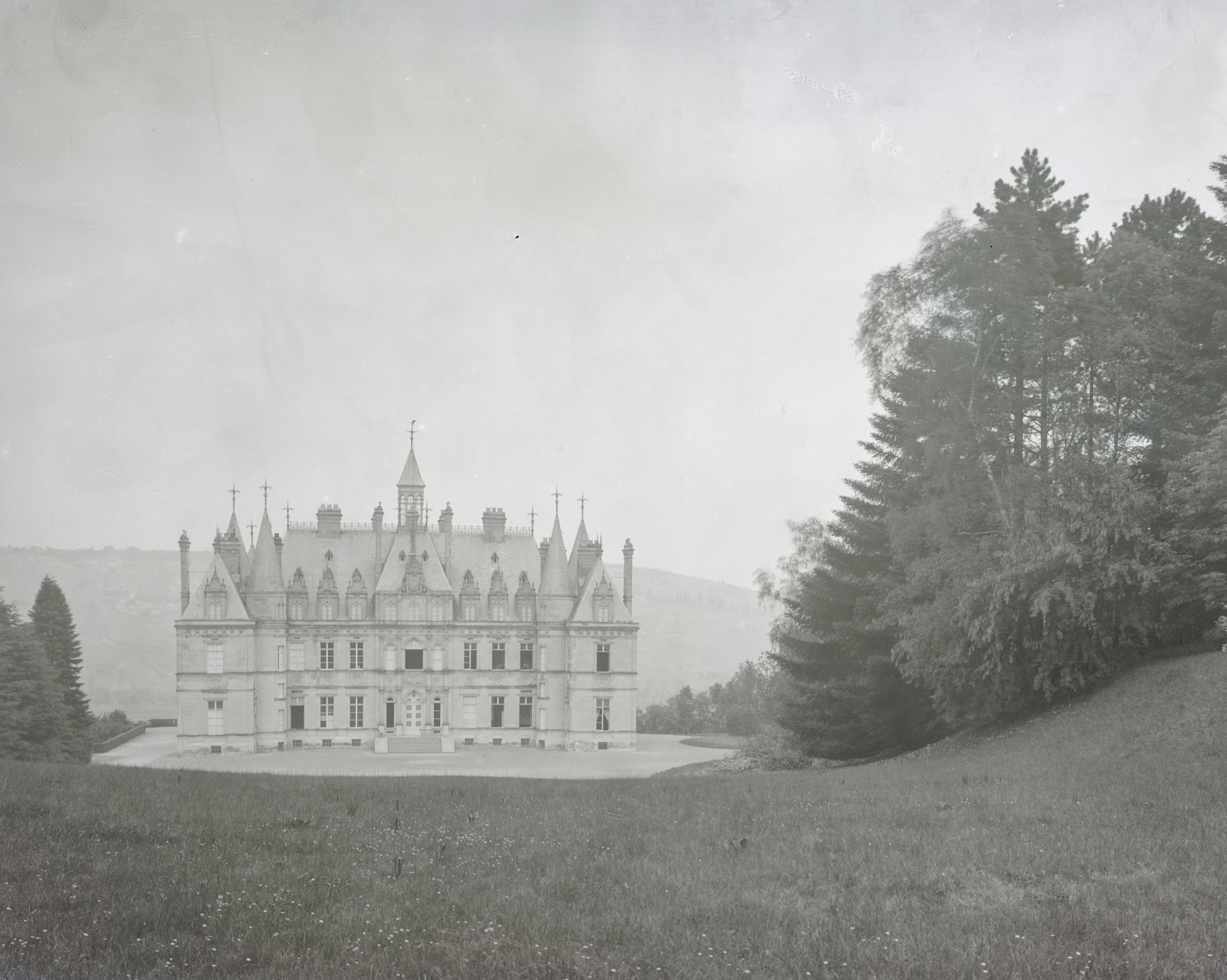 Ten of the most exquisite French châteaux, photographed for Country Life in 1906 and still standing today
Ten of the most exquisite French châteaux, photographed for Country Life in 1906 and still standing todayIn the early 20th century, Country Life commissioned Frederick H. Evans to photograph some of France's châteaux. Here are some of his efforts.
-
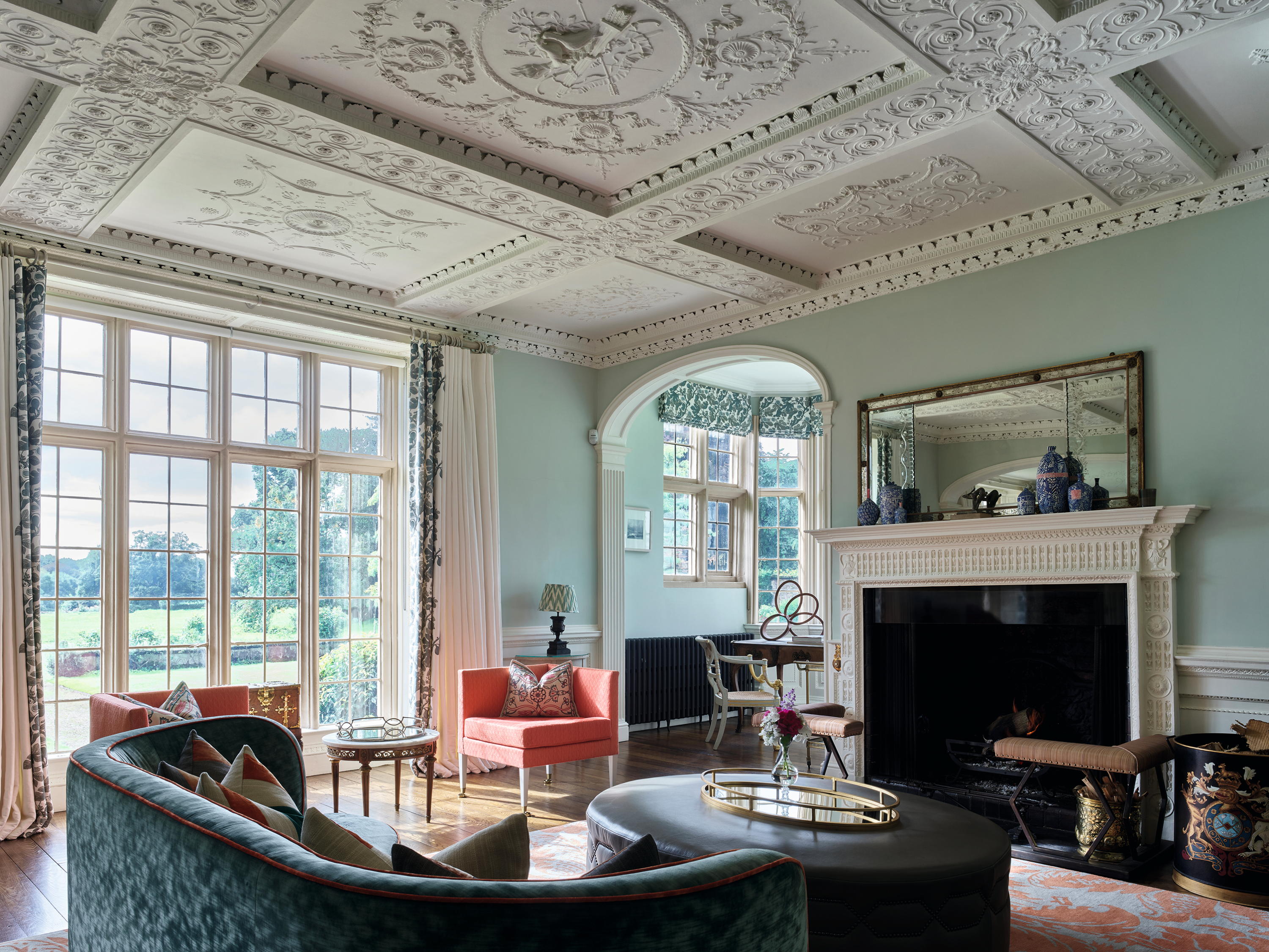 War, ruin and renaissance: Dorfold Hall's 400-year journey through the ages
War, ruin and renaissance: Dorfold Hall's 400-year journey through the agesJohn Goodall describes the antiquarian rediscovery of Dorfold Hall, Cheshire — home of Charles and Dr Candice Roundell — and the recent spectacular renewal of this important Jacobean house. Photographs by Paul Highnam for the Country Life Photo Library.
-
 All fired up: 12 of our favourite chimneys, from grand architectural statements to modest brick stacks, as seen in Country Life
All fired up: 12 of our favourite chimneys, from grand architectural statements to modest brick stacks, as seen in Country LifeNothing says winter like a roaring fire, and plenty of the houses that we've photographed for the magazine's architectural places have fireplaces and chimneys worth boasting about.
-
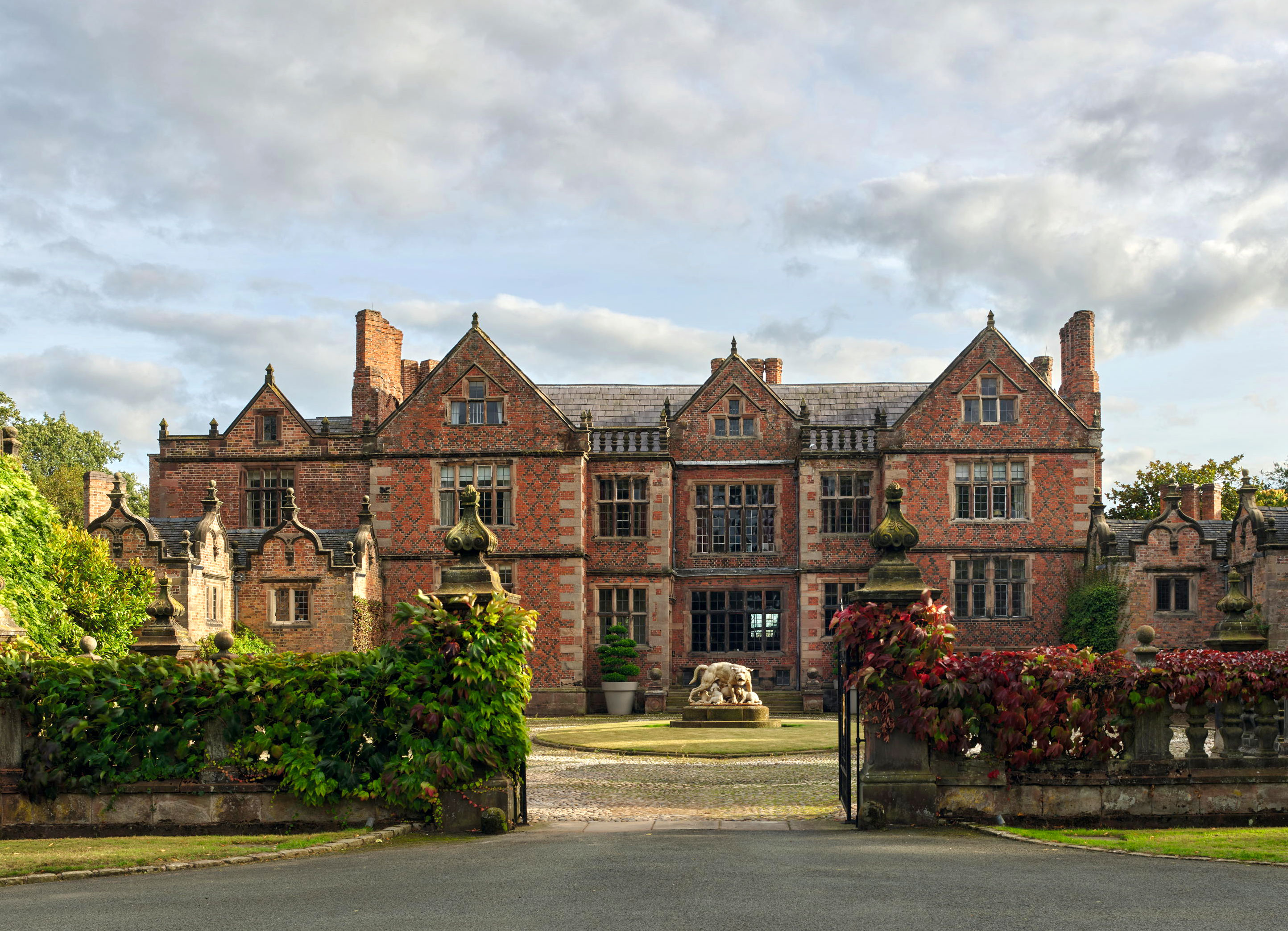 Dorfold Hall: The 'most neat and beautiful house of brick' that owes its existence to a desperate effort to secure succession
Dorfold Hall: The 'most neat and beautiful house of brick' that owes its existence to a desperate effort to secure successionDorfold Hall in Cheshire is an outstanding Jacobean house, but was an unexpected product of dynastic disappointment. John Goodall examines the remarkable circumstances of its construction; photographs by Paul Highnam for Country Life.